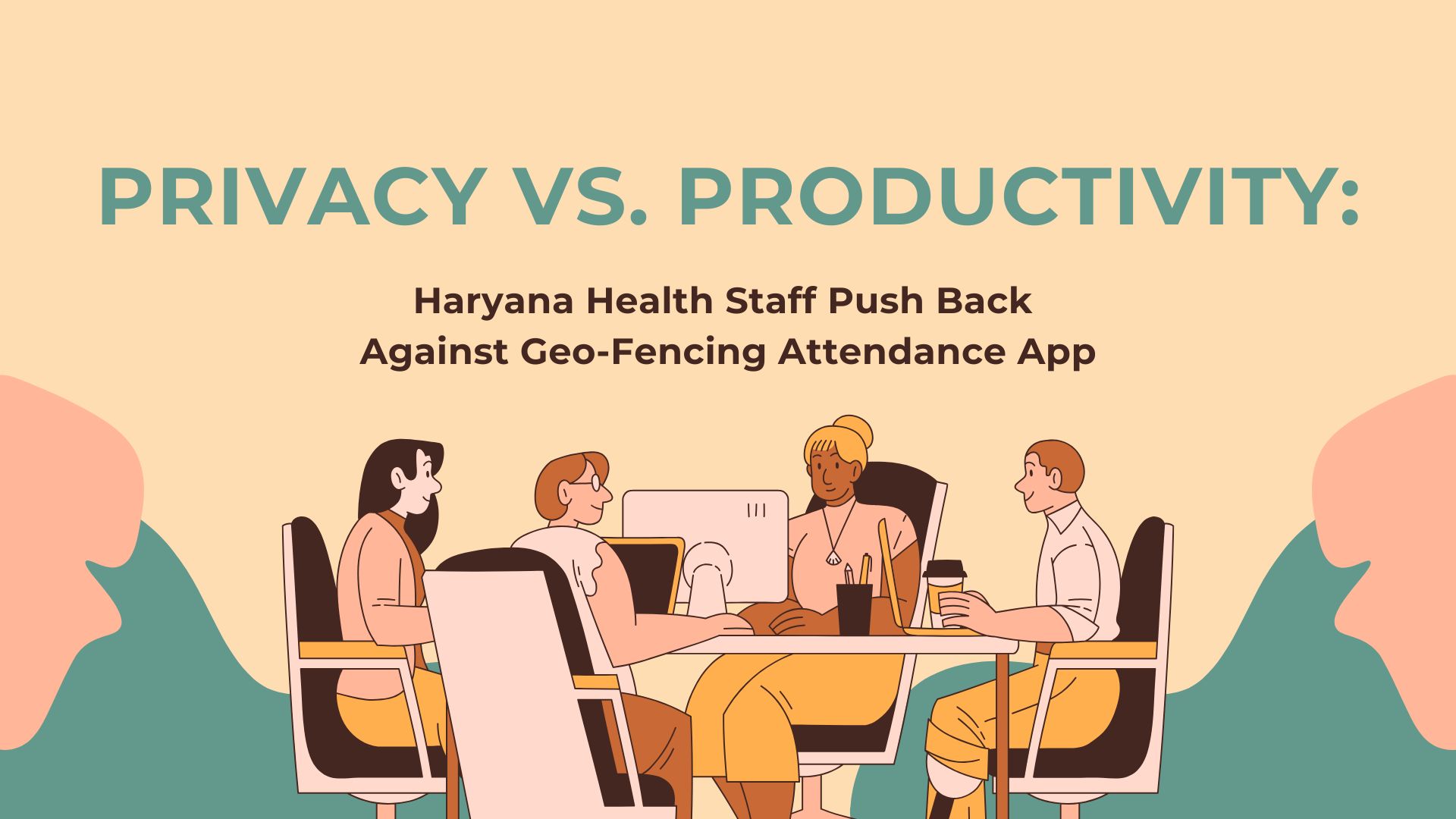The government of Haryana has recently introduced a new employee attendance app featuring geo-fencing technology, designed to streamline and track attendance for healthcare workers across the state. While the intent behind the move is to digitize attendance and improve transparency, it has met significant resistance from the very workforce it aims to regulate. Health department employees have raised serious privacy concerns and are pushing back against what they perceive as invasive monitoring through the app’s geo-fencing feature.
Understanding the Employee Attendance App Rollout
The employee attendance app launched by Haryana’s health department comes equipped with geo-fencing capabilities. Geo-fencing uses GPS or RFID technology to establish a virtual perimeter around a specific geographic area. When employees enter or leave this boundary, the app records their presence, thereby automating the attendance process. The state government insists that this employee attendance app is part of a broader effort to promote accountability and punctuality among government workers. By ensuring that employees are physically present at their designated locations during work hours, the department believes that service delivery, especially in rural healthcare centers, will see notable improvement.
The Pushback from Health Workers
Despite the official stance, thousands of health workers across Haryana have expressed dissatisfaction with the new system. Their primary objection is the use of geo-fencing in the employee attendance app, which they believe encroaches on their right to privacy. Multiple unions and associations have presented memoranda to state officials, requesting a review or adjustment in the app’s implementation. Many employees argue that while maintaining attendance is necessary, constantly tracking their location is a form of digital surveillance. They fear that the employee attendance app could be misused or lead to disciplinary action even for minor deviations in location, regardless of their actual work performance.
Privacy and Autonomy at the Forefront
One of the critical concerns raised by employees is that geo-fencing technology turns the employee attendance app into more than just a tool for timekeeping. It begins to act as a surveillance device, recording movement beyond office hours and tracking individuals’ locations, potentially without consent. The notion of being monitored 24/7—either actively or passively—does not sit well with a workforce already burdened by long hours and high pressure, especially in post-pandemic times. Health workers are demanding a review of the features embedded in the employee attendance app, especially those that could potentially infringe upon their autonomy.
Legal and Ethical Considerations
Privacy rights under Indian law have gained increasing attention since the Supreme Court declared the right to privacy a fundamental right in 2017. Employees argue that forcing them to use a geo-fencing-enabled employee attendance app without explicit consent could violate this ruling. Moreover, ethical concerns about data storage, access control, and third-party sharing are being debated. Questions such as who owns the data, how long it is stored, and who has access to it remain unanswered by the authorities. There is a rising demand for transparency in how data from the employee attendance app will be used, especially since health data and movement data can be sensitive.
Union Demands and Government Response
Health worker unions across the state are demanding either a complete rollback of the geo-fencing feature or a more transparent and employee-friendly version of the employee attendance app. They suggest alternatives, such as biometric attendance, RFID cards, or QR-code-based systems, that do not involve real-time location tracking. The government, on its part, acknowledged the protests and stated that it is willing to hold discussions. However, it maintains that the employee attendance app is essential for modernizing the public sector and ensuring efficient delivery of services. Officials have also cited successful implementation in other departments as evidence of its effectiveness.
Striking a Balance Between Efficiency and Privacy
The core challenge is striking the right balance between ensuring operational efficiency and safeguarding individual privacy. On one hand, the employee attendance app is a valuable tool for improving administrative accountability. On the other hand, it risks alienating the very workforce it intends to empower if introduced without adequate consultation or privacy safeguards. Employee welfare advocates argue that if implemented correctly, the employee attendance app can be beneficial. However, it must be done in a manner that protects individual rights and includes clear policies regarding data handling, usage limits, and oversight mechanisms.
Impact on Morale and Productivity
Many health professionals believe that the use of a location-tracking employee attendance app may lead to demoralization and increased attrition. The sentiment among workers is that such tools signal a lack of trust from management. Instead of motivating employees, it might lead to resentment and a reduction in morale, ultimately affecting productivity. Long working hours, travel to remote areas, and emergency duties are the norm in the healthcare sector. In such a scenario, an overly strict employee attendance app might not account for real-world challenges, leading to unfair evaluations or penalties.
Alternatives to Consider
Several experts suggest adopting more inclusive and less invasive methods for tracking attendance. Here are some potential alternatives to the geo-fencing employee attendance app:
- Biometric Attendance Systems: These systems verify identity using fingerprints or retina scans without tracking movement.
- QR Code Scanning: Employees scan a code upon entry and exit at specific locations.
- Manual Check-ins Verified by Supervisors: Periodic human supervision can complement tech-based attendance.
- Time Logging via Work Portals: Web portals enable employees to log in and out, providing detailed work summaries.
These methods can retain the core goal of accountability without violating personal privacy.
Role of Communication and Transparency
Many experts believe that the backlash could have been avoided with better communication and employee engagement. Introducing an employee attendance app that includes sensitive features, such as geo-fencing, requires dialogue with stakeholders, especially those most affected. Involving employees in the development and rollout process increases the likelihood of building trust in the system. The lack of awareness about how the employee attendance app would use their data has only deepened distrust and resistance.
The Road Ahead
The Haryana government is now at a crossroads. It must decide whether to proceed with the existing employee attendance app as is, revise it with input from health workers, or roll back its deployment entirely. The coming weeks are crucial as dialogues between unions and the health department are expected to intensify.
The outcome will not only impact Haryana’s healthcare workforce but could set a precedent for other states considering similar digital tools. A collaborative approach could help achieve the desired outcome: effective attendance monitoring without sacrificing privacy. The debate surrounding the employee attendance app in Haryana’s health department reflects a broader issue in today’s increasingly digital workspaces: the need to strike a balance between efficiency and ethics. While the app promises streamlined administration and accountability, it must not come at the expense of employee trust and fundamental rights. To move forward, authorities must collaborate with employees to develop an employee attendance app that is both effective and respectful of employee privacy. Transparent policies, clear communication, and responsible use of technology will be key to resolving this standoff. Haryana’s case serves as a crucial reminder that digital solutions should empower workers, not unfairly monitor them.
Sources:
- OfficeVibeHub – https://officevibehub.com/geofencing-attendance-app/
- Timeero Blog – https://timeero.com/post/mobile-timekeeping-5-essential-geofencing-factors-to-consider
- Internet Freedom Foundation – https://internetfreedom.in/privacyofthepeople-harms-of-biometric-attendance-apps/





